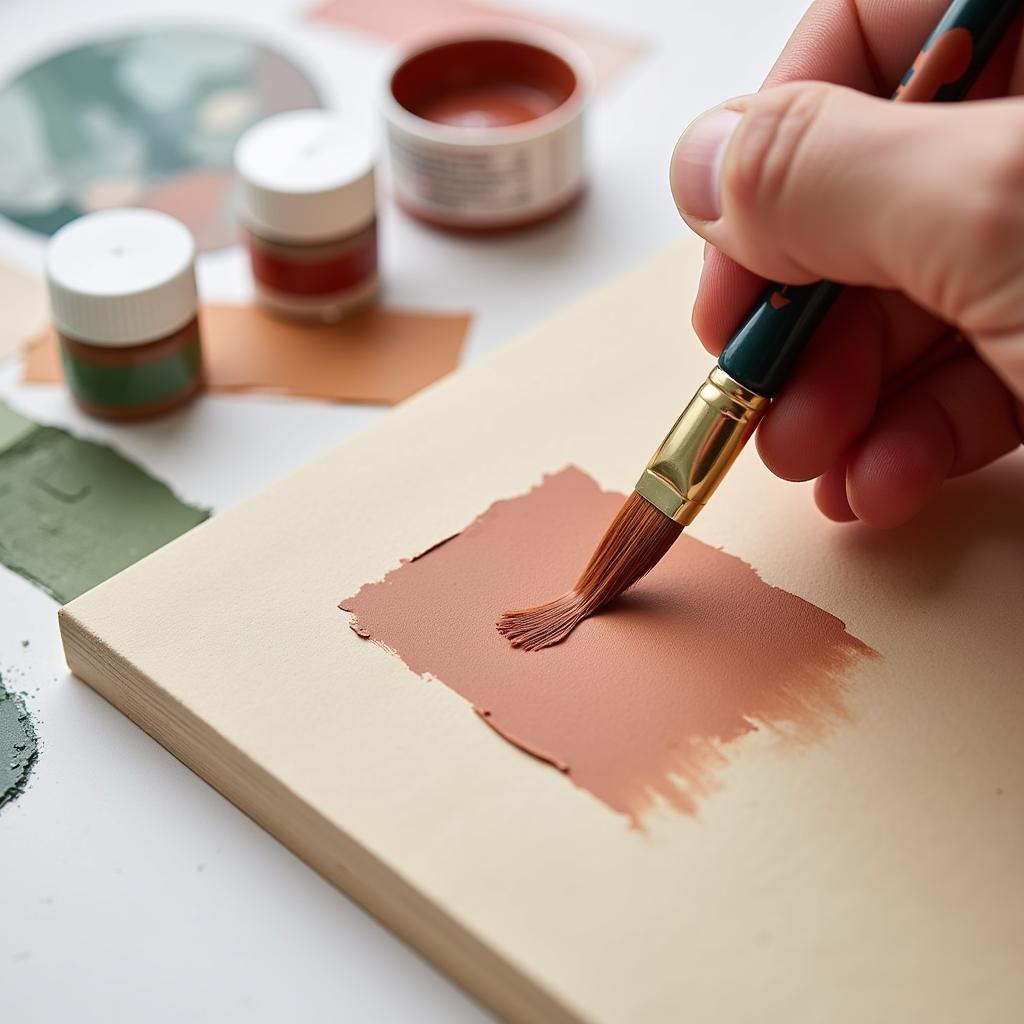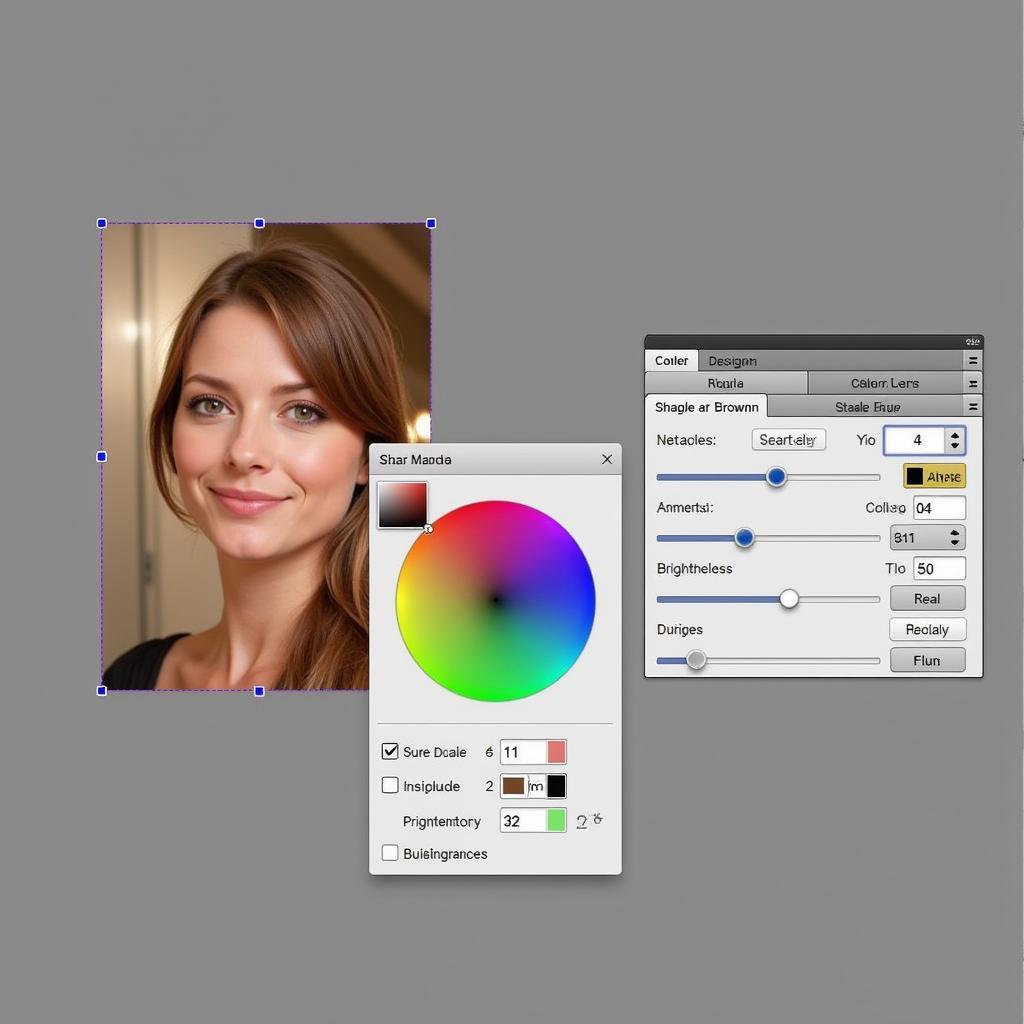Brown, a versatile and earthy hue, often finds its way into our homes and wardrobes. But sometimes, we need to neutralize or tone down brown, whether it’s an unwanted tint in hair color, a wall paint mishap, or a clashing element in a design project. So, what color cancels brown? The answer isn’t straightforward, as brown itself is a complex color. Understanding color theory is key to effectively neutralizing brown tones. After the introduction, we’ll explore color theory basics and delve deeper into several practical scenarios where canceling brown is crucial.
Color theory dictates that opposite colors on the color wheel neutralize each other. Since brown isn’t a primary or secondary color, finding its direct opposite is tricky. Brown is generally created by mixing red, yellow, and blue. This means its complementary color lies somewhere within the blue-green spectrum. To determine the precise canceling color for a specific shade of brown, consider its undertones. A reddish-brown might require a more greenish-blue, while a yellowish-brown might be neutralized by a more bluish-purple. Do you want to know how to avoid hair turning green when coloring? Click here for tips and techniques to achieve the perfect shade.
Understanding Color Theory for Brown Cancellation
The color wheel is your essential tool for understanding color relationships. It reveals how colors interact and how to achieve desired visual effects. Complementary colors, located opposite each other, have the greatest contrast and, when mixed, neutralize each other. Since brown is a tertiary color, meaning it’s a mix of three primary colors, its complement isn’t as easily defined as with primary or secondary colors.
Identifying Brown’s Undertones
Brown’s varied undertones can significantly impact the color you need for cancellation. For example, a warm, reddish-brown requires a cooler, greenish-blue to neutralize its red undertones. Conversely, a cool, grayish-brown might benefit from a warmer, reddish-purple to counteract its ashy tones. Observe the brown carefully under different lighting conditions to accurately identify its dominant undertones. Learn more about how to tone down blonde hair color.
Canceling Brown in Different Scenarios
The approach to canceling brown varies depending on the application. Whether it’s paint, hair dye, or digital design, the underlying principles of color theory remain consistent. Let’s explore some common situations.
Neutralizing Brown in Paint
When dealing with unwanted brown in paint, understanding the undertones is vital. If your brown paint has a red undertone, a green-based neutralizer is often effective. For yellow undertones, a violet-based neutralizer will be more suitable. Remember to test the neutralizing color on a small, inconspicuous area before applying it to the entire surface. Ever wondered what color cancels out red hair? This guide provides insightful information.
 Neutralizing Brown Paint with Green Tint
Neutralizing Brown Paint with Green Tint
Correcting Brown Hair Color
Correcting unwanted brown tones in hair color can be more challenging than dealing with paint. It’s crucial to choose the right color corrector based on the unwanted brown’s undertones. For instance, to neutralize orange-brown tones, a blue-based toner is your best bet. If you’re aiming for an ashy blonde and need to counteract brassy brown tones, a purple toner is ideal. Learn how to change the color of already mixed paint.
Addressing Brown in Digital Design
In digital design, color correction tools offer precise control over color adjustments. You can use the color picker to identify the specific shade of brown and then use its complementary color to neutralize or adjust it as needed. Playing with the hue, saturation, and brightness sliders can also help fine-tune the color to your liking.
 Correcting Brown Tones in Digital Design Using Color Picker
Correcting Brown Tones in Digital Design Using Color Picker
Conclusion: Mastering Brown Color Correction
Neutralizing brown involves understanding its undertones and applying the principles of color theory effectively. Whether you’re working with paint, hair dye, or digital images, choosing the correct complementary color is key to achieving the desired result. Remember to test and adjust as needed, and always prioritize using high-quality products for optimal results. Curious about the purpose of a green color corrector? Explore this informative article.
FAQ
- What is the direct opposite of brown on the color wheel? Brown isn’t a primary or secondary color, so it doesn’t have a direct opposite. Its neutralizing color depends on its undertones.
- How do I neutralize reddish-brown? A greenish-blue is typically effective for neutralizing reddish-brown.
- What color cancels yellowish-brown? A bluish-purple or violet is generally used to neutralize yellowish-brown.
- Can I use any blue to cancel brown? No, the specific shade of blue matters. Choose a blue that complements the brown’s undertones.
- What if I’m unsure about the brown’s undertones? Consult with a color expert for personalized advice.
Common Scenarios and Questions
- Scenario: My newly painted wall is too brown.
- Question: Can I paint over it directly with a neutralizing color?
- Answer: Yes, but test the neutralizer on a small area first. Multiple coats might be needed.
Suggested Further Reading
- How to Avoid Hair Turning Green When Coloring for hair coloring tips.
- What is the green color corrector for? if you’re working with makeup.
Need more assistance? Contact us at Phone: 0373298888, Email: [email protected], or visit us at 86 Cầu Giấy, Hà Nội. Our customer service team is available 24/7.

